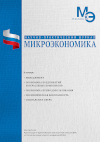Comparative analysis of foreign qualitative models for forecasting crisis situations and bankruptcy probability. Part 1
DOI: 10.33917/mic-2.121.2025.70-81
The article provides a comparative analysis of foreign qualitative models of bankruptcy forecasting, in particular the models of W. Beaver and D. Duran, with the aim of assessing their applicability to Russian innovative companies. The strengths and weaknesses of the models are considered, as well as the features of their use in the context of Russian reporting under Russian accounting standards (RAS standards). The study presents the results of calculations of financial ratios for 22 Russian mobile operators and telecommunications services (hereinafter referred to as Russian innovative companies) and their comparison with the real financial situation. To assess the accuracy of predictions, the F1 measure was used, the results of which revealed a significant number of inaccuracies in bankruptcy forecasting. Based on the data obtained, the issue of adapting foreign qualitative models of bankruptcy forecasting to Russian economic realities and taking into account the industry specifics of Russian innovative companies in their research is considered.
References:
1. Aleksandrova M. Yu. Methods of text data classification: can the potential of quantitative analysis be used in qualitative research? Interaction. Interview. Interpretation. 2021;13(2):81–96. DOI: https://doi.org/10.19181/inter.2021.13.2.5
2. Petrov S.V. Models for predicting the financial insolvency of enterprises. Finance and Credit. 2018;24(5):60–67. DOI: 10.52928/2070-1632-2018-24-5-60-67
3. Ohlson J.A. Financial Ratios and the Probabilistic Prediction of Bankruptcy. Journal of Accounting Research. 1980;18(1):109–131. DOI: 10.2307/2490395
4. Sidorov I.N. Foreign models of bankruptcy diagnostics: possibilities of application in Russia. Management accounting. 2017;15(2):70–78. DOI: 10.52928/2070-1632-2017-15-2-70-78
5. Zmijewski M.E. Methodological Issues Related to the Estimation of Financial Distress Prediction Models. Journal of Accounting Research. 1984;22:59–82. DOI: 10.2307/2490859
6. Ivanov A.V. Forecasting Enterprise Bankruptcy: Foreign Experience and Russian Practice // Economics and Management. 2016;12(3):42–51. DOI: 10.52928/2070-1632-2016-12-3-42-51
7. Beaver W.H. Financial Ratios as Predictors of Failure. Journal of Accounting Research. 1966;4:71–111. DOI: 10.2307/2490171





